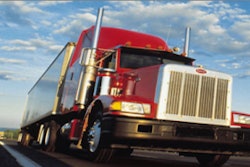Cummins Inc. on Tuesday, March 22, announced that the QSX15 engine will move forward to meet near-zero emissions levels in 2014 with power output increased up to 675 hp (503 kW). The 15-liter heavy-duty engine was revealed at CONEXPO-CON/AGG to meet U.S. Environmental Protection Agency Tier 4 Final and European Union Stage IV emissions with an ultra-clean aftertreatment system combining the Cummins Particulate Filter with selective catalytic reduction (CPF-SCR). The company also revealed the latest generation of the QSL9 engine – capable of meeting near-zero emissions levels.
The new 675-hp top rating for the QSX15 takes the Tier 4 Final engine 75 hp (56 kW) above the Tier 4 Interim top rating of 600 hp (447 kW). The QSX11.9 engine also increases power output for Tier 4 Final with a new top rating of 525 hp (392 kW). The 11.9-liter QSX shares the same engine technology and CPF-SCR ultra-clean aftertreatment system as the QSX15.
Engine power density for Tier 4 Final increases to 45 hp (34 kW) per liter for the QSX15 and 44 hp (33 kW) per liter for the QSX11.9. Cummins says this offers a new level of power capability for premium-performance machines operating in the toughest construction, mining, agriculture and materials handling applications.
To meet Tier 4 Final in 2014, particulate matter (PM) reduces to 0.02 g/kW-hr, and oxides of nitrogen (NOx) reduce to 0.40 g/kW-hr. Compared to Tier 3 emissions levels, these figures represent a 90 percent reduction for both PM and NOx. “The QSX15 and QSX11.9 not only meet the challenge of near-zero emissions, but they are able to achieve this with higher power output and lower fuel consumption,” says Jennifer Rumsey, executive director of Cummins Heavy-Duty Engineering.
Rumsey says the CPF-SCR ultra-clean aftertreatment raises the threshold of what can be achieved in the trade-off between lower emissions and higher performance. “This means we are able to realize the full power productivity of the QSX engines by precisely balancing emissions control between the aftertreatment and engine combustion with cooled exhaust gas recirculation and XPI fuel injection,” she says. “The emissions control logic driven by the engine ECM plays a key role in this.”
The QSL9 9-liter engine achieves 2014 EPA Tier 4 Final and EU Stage IV standards with an ultra-clean aftertreatment system, combining the Cummins Compact Catalyst with selective catalytic reduction (CCC-SCR). With up to 400-hp (298 kW) output, the QSL9 retains the higher output and faster engine response demonstrated by the Tier 4 Interim QSL9.
The CCC-SCR ultra-clean aftertreatment system is configured specifically to provide a more compact and flexible equipment installation for Tier 4 Final. The Cummins Compact Catalyst, previously used for ratings below 174 hp (130 kW), is scaled-up in size for the 9-liter platform. Combined with SCR, the aftertreatment system achieves near-zero emissions with fully passive flow-through operation.
In addition to the QSL9, the CCC-SCR system will be utilized by the QSB6.7, QSB4.5 and QSB3.3 engines to offer a common aftertreatment solution from 75 hp to 400 hp (56 kW to 298 kW). The scalability of the CCC-SCR system enables sizing to be configured for specific power outputs across the 3.3-liter to 9-liter engine range.
“We listened to equipment manufacturers before developing our Tier 4 Final architecture for the QSB3.3 to QSL9 product line, and the clear message we heard was to focus on reducing installation complexity as much as possible – while also retaining the high power output and performance offered by our Tier 4 Interim products,” says Jeff Weikert, vice president of Cummins MidRange Engineering. “I am very pleased to say that with the CCC-SCR ultra-clean aftertreatment system, we are able to meet and exceed our customer expectations for Tier 4 Final.”
Weikert says that with the addition of SCR, Cummins now has the ability to precisely balance NOx reduction between aftertreatment and cooled exhaust gas recirculation on the engine – giving the company more control over the combustion formula than ever before. “This means we are able to retain the impressive power output and transient response of the Tier 4 Interim products, with fuel consumption reduced even further,” he says. “Importantly, we have been able to reduce engine-out PM to a level low enough to extend the use of the Cummins Compact Catalyst right across our QSB6.7 and QSL9 ratings to provide a fully passive aftertreatment solution.”
As the CCC is smaller than a particulate filter, it offers the benefit for increasingly space-constrained installations. At Tier 4 Interim, this space-saving advantage has been important for four-cylinder applications – but looking ahead to Tier 4 Final, the need to minimize space claim moves beyond this to the 6.7-liter and 9-liter six-cylinder platforms up to 400 hp (298 kW).













